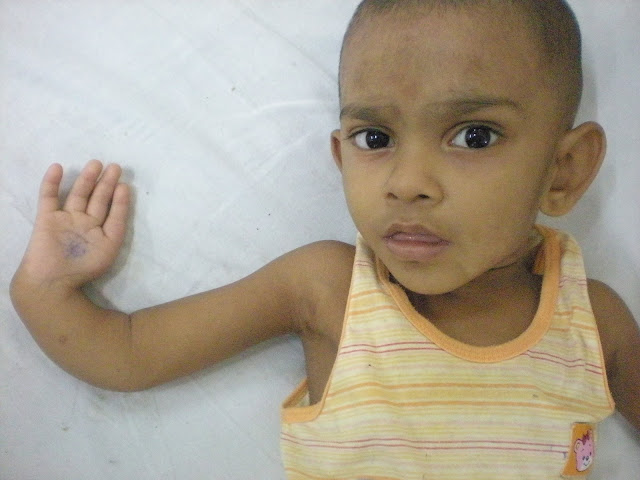Encephalocele
Two major forms of dysraphism affect the skull, resulting in protrusion of tissue through a bony midline defect, called cranium bifidum. A cranial meningocele consists of a CSF-filled meningeal sac only, and a cranial encephalocele contains the sac plus cerebral cortex, cerebellum, or portions of the brainstem. Microscopic examination of the neural tissue within an encephalocele often reveals abnormalities. The cranial defect occurs most commonly in the occipital region at or below the inion, but in certain parts of the world, frontal or nasofrontal encephaloceles are more prominent. These abnormalities are one tenth as common as neural tube closure defects involving the spine. The etiology is presumed to be similar to that for anencephaly and myelomeningocele; examples of each are reported in the same family.
Infants with a cranial encephalocele are at increased risk for developing hydrocephalus due to aqueduct stenosis, Chiari malformation, or the Dandy-Walker syndrome. Examination may show a small sac with a pedunculated stalk or a large cystlike structure that may exceed the size of the cranium. The lesion may be completely covered with skin, but areas of denuded skin can occur and require urgent surgical management. Transillumination of the sac may indicate the presence of neural tissue. A plain roentgenogram of the skull and cervical spine is indicated to define the anatomy of the vertebrae. Ultrasonography is most helpful in determining the contents of the sac. MRI or CT further helps define the spectrum of the lesion. Children with a cranial meningocele generally have a good prognosis, whereas patients with an encephalocele are at risk for visual problems, microcephaly, mental retardation, and seizures. Generally, children with neural tissue within the sac and associated hydrocephalus have the poorest prognosis. Meckel-Gruber syndrome is a rare autosomal recessive condition that is characterized by an occipital encephalocele, cleft lip or palate, microcephaly, microphthalmia, abnormal genitalia, polycystic kidneys, and polydactyly. Determination of maternal serum α-fetoprotein levels and ultrasound measurement of the biparietal diameter as well as identification of the encephalocele itself may diagnose encephaloceles in utero.
Contact: Dr Deepak Dadge on face book.


